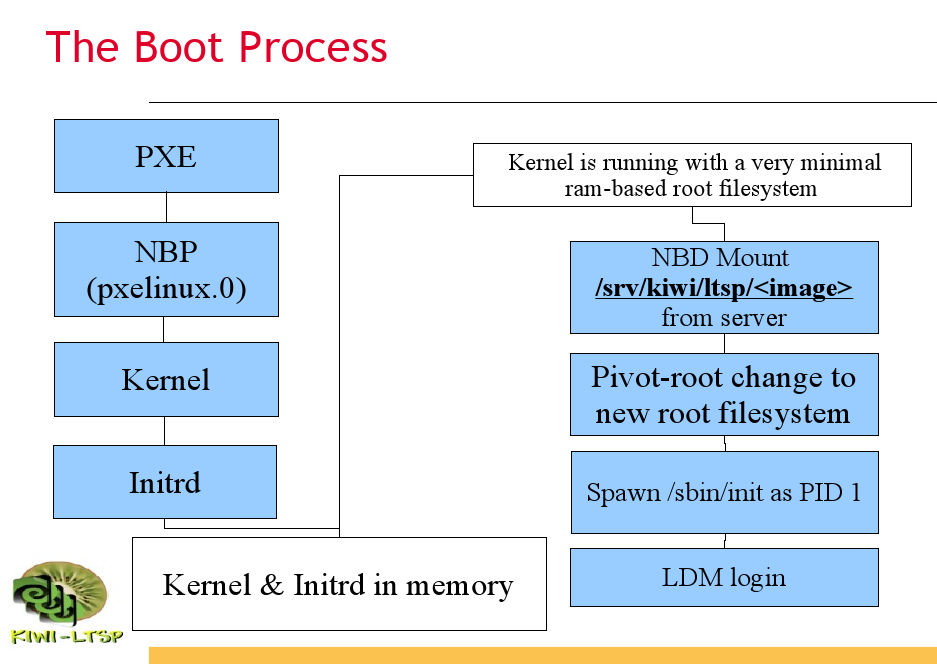Portal:KIWI-LTSP/Featured article
Featured article edit
What "extra" does KIWI bring to LTSP?
- We use KIWI imaging technology to create boot as well as client images.
- We can use "prebuilt" images as KIWI's netboot image provides feature of serving config files through tftp server.
- Idea of using "prebuilt" images is that users do not have to build their own images, so the DVD media to build chroot image is not required.
- As KIWI provides facility to create different kind of images, we can create Live CD or USB stick image for the LTSP clients, these images work on LTSP5 server running on other distributions too.
- Some LTSP implementations require manual configuration of services, kiwi-ltsp-setup script provides all the tools necessary to build images and configure services.
- KIWI-LTSP provides easy way to create diskless distributed build farm using Icecream
- Apart from NFS and NBD root, KIWI-LTSP supports ATA over Ethernet also.
- With ATA over Ethernet it is possible to serve multiple images of different kinds from single server, including network booting Fat client images.
Featured article edit
Additional information, Tips
An extra benefit of using openSUSE for LTSP in an existing NetWare school network is that the Novell client for Linux can be installed enabling use of existing network home directory structures, iPrint, Zenworks and more.
- KIWI-LTSP in openSUSE-Education FOSDEM 2009 talk, slides and video.
- To make everyone comfortable with the theory and tasks, here is a theory paper
- How does KIWI-LTSP work?
- Using iTALC for administration of the clients with LTSP
- Create LTSP clustered build farm using Icecream
- Getting local applications support in LTSP (experimental)
- Presentation on KIWI-LTSP given at mukt.in '08
- Project wiki for developers
Featured article edit
How does it work?
PXE Boot process
In case of PXE booting, the client looks for DHCP server, the DHCP server provides the network configuration and hands over further booting to TFTP server. The client then fetches "linux-ltsp" - kernel and "initrd-ltsp" - initial ram disk. Once the booting of the kernel and initrd completes, booting into the chroot image begins. Upon booting, the clients runs /etc/init.d/ltsp-client.init
LTSP init scripts
ltsp-client.init is responsible for launching ldm (ltsp display manager) and fetching various variables from /etc/lts.conf, it also launches mounter script that mounts local devices into the user's session on the server. Various services required by the client such as sound using PulseAudio, local devices using cdpinger and ltspfsd, printing using jetpipe are also set up by the ltsp-client.init.
LTSP Display Manager
LDM supports login to the server via ssh. LDM logs in user and starts Xsession over ssh, it also supports authentication via ssh and Xsession without encryption(LDM_DIRECTX).
